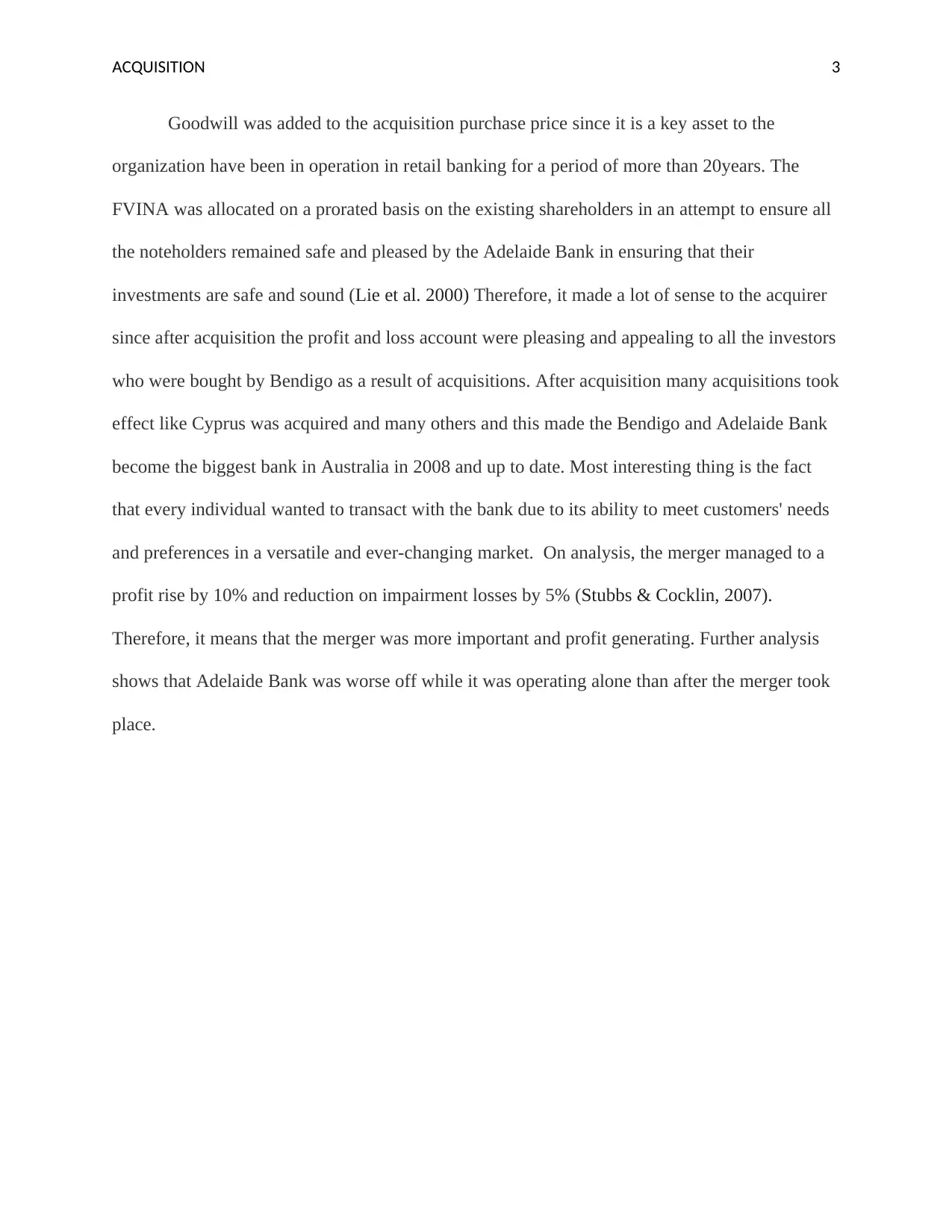Analyzing the Acquisition of Adelaide Bank by Bendigo Bank Ltd
VerifiedAdded on 2023/06/11
|4
|725
|376
Case Study
AI Summary
This case study analyzes Bendigo Bank Ltd's acquisition of Adelaide Bank Ltd, focusing on the offer price, buy-back clause, and subsequent financial performance. The acquisition, completed in November 2007 for A$4 billion, involved Bendigo Bank gaining a controlling interest in Adelaide Bank through a share purchase plan. Post-acquisition, the merged entity, renamed Bendigo and Adelaide Bank Ltd, reported a profit gain after tax of $170.5 million in June 2008, and a gain of $17.6 million after tax through share acquisitions. The payment was structured to clear all payables to eligible noteholders by June 2012. Goodwill was added to the acquisition purchase price, and FVINA was allocated on a prorated basis. The merger led to a 10% profit increase and a 5% reduction in impairment losses, indicating that Adelaide Bank performed better post-merger. The case study references the importance of these changes and how they impacted the bank.
1 out of 4







![[object Object]](/_next/static/media/star-bottom.7253800d.svg)